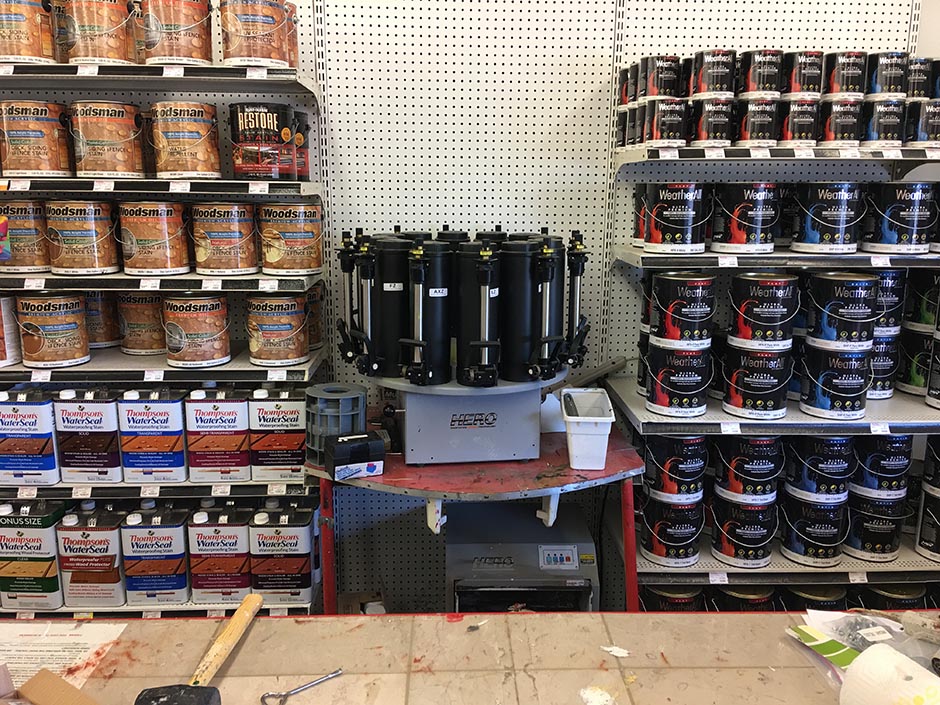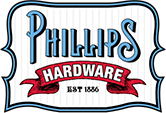Important Paint Tips from your Local Phillips Hardware Store
Both latex and oil-based paints are available in a variety of different glosses, which determines the luster or shininess of dry paint. The sheen of paint also determines its ability to hide flaws and how easy it is to clean.
Eggshell and Satin Finishes – Try an eggshell or satin paint finish in rooms the family uses most frequently, such as kitchens, bathrooms, children’s bedrooms, hallways and the garage. Eggshell and satin finishes offer subtle sheen on walls, are very durable, and make clean up a snap.
Semi-gloss Finishes – Semi-gloss finishes are great on kitchen cabinets, the front door, banisters, railings and windowsills and work great at highlighting details in trim and decorative molding. Semi-glosses can be used in children’s rooms and on doors, woodwork or trim. They also are great in bathrooms, where high levels of moisture are prevalent.
Flat Finishes – If your wall is nicked or marred with dents, you’d be better off selecting a paint with a lower level of sheen. Flat paints have very little sheen to no shine and do the best job of hiding surface imperfections.
With nearly all flat paints, stain removal can be more difficult, so flat paint is usually used in areas that require little or no washing, such as ceilings or in closets, adult bedrooms and formal living rooms and dining rooms.
Some other general paint tips are…
- You get what you pay for when buying paint, so purchase the best you can afford. High-quality paints go on smoothly without showing brush or roller marks, are unlikely to change color with age, and endure years of scrubbing.
- Lighter paint colors make surfaces recede to visually enlarge a room. Darker tones seem to advance surfaces, which cozies up large spaces.
- Vary shades of one hue on the ceiling, woodwork, and walls to boost interest in monochromatic interiors.
- Use contrasting colors on furniture legs, frames, cabinet boxes, and doors to create eye-catching decor.
- Make sure you measure before you go to buy the paint. A gallon of paint covers about 400 square feet, with one coat of paint. Measure the area to be covered and multiply that measurement by the number of coats you’ll need to determine how much paint to purchase.
- Buy extra to eliminate return trips to the paint store, and so that there will be paint leftover for later touch-ups.
- To prevent paint from dripping down a can’s sides by creating holes in the interior rim using a hammer and nail. As you remove paint from a brush, excess paint will drip inside the can.
- When it’s time to take a long break or quit for the day, wrap paint-covered rollers and brushes in plastic wrap and place them in the freezer until you need them.
- You can apply some tape to a paint roller before using it for the first time to get off any extra lint on the roller.
- Make sure you write down the color of paint that you used in case you need to go back later for some more paint.


